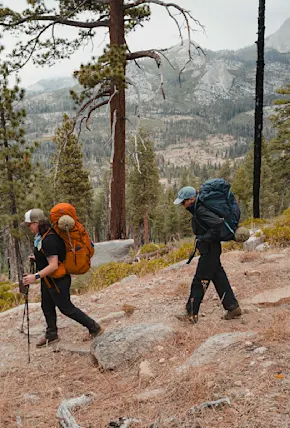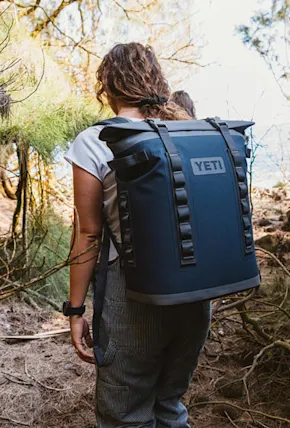Hydration system compatibility
Staying hydrated is a key part to enjoying long and short hikes alike and one of the easiest ways to stay on top of liquid intake is having a little plastic nipple at the ready to take sips from while you walk. The best hydration pack can benefit your hiking experience regardless of the size of the pack. While some packs will come with a hydration bladder included, many are compatible with aftermarket bladders – just look for a pocket in the main body or mesh pocket in the pack that can fit a hydration bladder and a port for the tube at the top. The pocket and port allow you to turn any hiking pack into a hydration pack.
My Top picks for different types of hikes
Daypack- The REI Flash 22 has all of the fancy accessories you could want like stretchy exterior easy access pockets that can house mid-hike snacks, hydration system compatibility, and a breathable hip belt and shoulder straps in a super lightweight package that can be stuffed into the corner of a suitcase when not being used making it the best daypack and an excellence travel backpack.
Weekend Warrior - The Mystery Ranch Bridger 35 is feature rich and a just-right-size for weekend adventures and has the added bonus of lasting forever thanks to the insanely burly 330-denier Robic nylon reinforcing high abrasion spots. (Ed Note: For longer trips that involve air or train travel, check our the Mystery Ranch Wheelie Duffel btw.)
Fast and light multi-day - The Hyperlite Mountain Gear Southwest 40 is a frameless pack that is crazy light at 30-ounces and manages to be hearty enough to be the pack of choice for Pacific Crest Trail hikers thanks to the premium dyneema it is built from. This durability and smart usability details like its oversized external mesh pocket make it the best ultralight backpack.
Boss Hawg Hauler - I have loaded the Deuter AirContact 65 + 10 with 90-pounds of gear (yes, I weighed it) and walked for five miles in comfort thanks to the premium fit and how well the hip belt distributed the pressure on my hips. This is the best backpacking backpack that I have used for the heaviest loads.
Frequently Asked Questions
Who makes the best hiking backpacks?
As a beginner, you really can’t go wrong if you go with a hiking backpack that has a reputable name and has been in the industry for a while. A great way to vet a company is to see if it is carried at a trusted retailer like REI. While I won’t take super clear sides on this question, each hiking pack can be better or worse for an individual’s needs or objectives, I will clearly suggest steering clear of Amazon dupe brands that knock off hiking backpacks at a cheaper price. I have tested a few of them and they have reliably performed like garbage.
What are the best brands of hiking backpacks?
I have tested hundreds of backpacks in the past decade and I have never tested a pack from either Deuter or Mystery Ranch that I didn’t love. Mystery Ranch was founded by legendary pack designer Dana Gleason, who founded both Kletterworks and Dana designs, and every pack that guy touches is gold.
What is the best size backpack to use on a thru hike?
A 50-liter ultralight pack, if packed correctly, can strike a nice balance between being not too heavy for the long hiking days necessary for a thru hike and still large enough to hold all of your hiking gear. While ultralight backpacking hardos are using 30-liter packs to get through the Pacific Crest Trail and Appalachian Trail, they are eschewing some very basic human comforts like a stove or tent to get their kit that light.
What is the best backpacking pack for a four day hike?
The difference between a backpacking pack for a four day hike and a thru hike is actually not that large because most thru hikes are string together re-supplies from city to city that are rarely more than a week away. A solid 50 liter hauler with comfortable hip padding like TK will serve you well for a four day backpacking trip.
What are the best dog backpacks for hiking?
Ruffwear makes incredible dog specific packs like the Palisades Dog Backpack. It uses a molded foam chassis that is highly porous to create a super comfortable fit for dogs even when they have to bring multiple days worth of food with them and put in long days on the trail.










